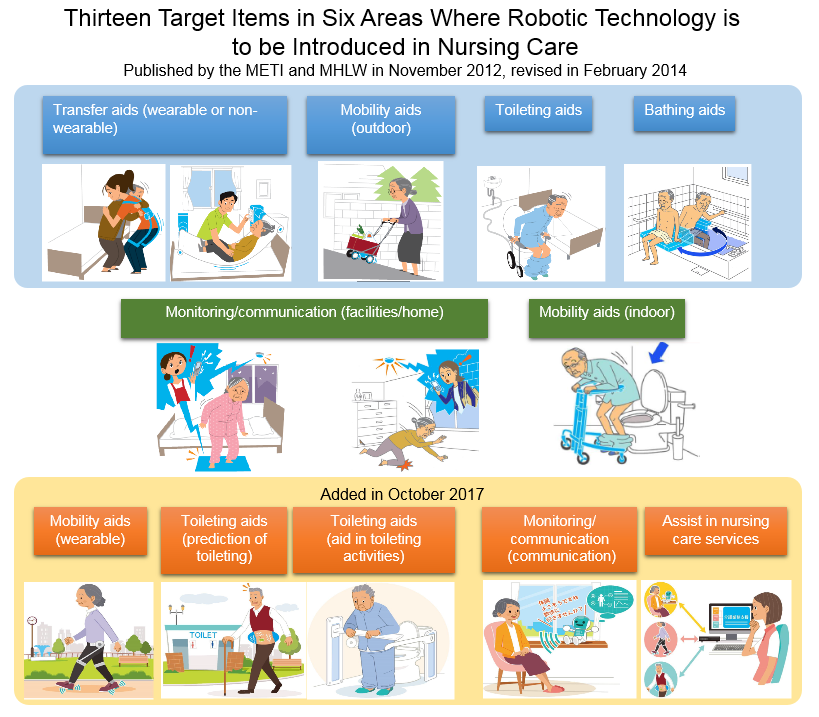Division of Healthcare Project to Promote the Development and Standardization of Robotic Devices for Nursing Care
Outline
| Key Fields | Medical Device Development(1st) |
|---|---|
| R&D phase | Applied Study, Clinical Research |
| Contact |
|
Overview
In this program, we measure the effects of robots intended for efficient nursing care that have already been developed, develop nursing-care robotic devices contributing to the maintenance of self-sufficient living among the elderly, and establish/standardize safety criteria. The purpose of the program is to promote health and longevity by contributing to the creation of new manufacturing industries in Japan.
This is a follow-up program of the Project to Promote the Development and Introduction of Robotic Devices for Nursing Care, which was initiated by the Ministry of Economy, Trade and Industry in 2013, transferred to AMED in 2015, and completed in 2017.
FY2018 budget
1.1 billion yen
Objectives of the program
The program promotes the development and standardization of robotic devices for nursing care that can contribute to self-sufficient living among the elderly in order to solve social challenges, such as increasing demand for nursing care and chronic nursing staff shortages, through the use of robotic technology.
Program Outline
This program is composed of three sub-programs.
| FY2018-FY2021 | Targeted areas | |
|---|---|---|
| Project to Promote the Development and Standardization of Robotic Devices for Nursing Care | Program to Measure/Evaluate Effects |
|
| Program to Establish/Standardize Criteria |
|
|
| The Subsidized Project for Development |
|
|
Program to Measure/Evaluate Effects
- By evaluating the effects of robotic devices in nursing care with scientifically and statistically valid designs, the program aims to establish evidence that can help improve robotic devices in nursing care, and that shows that the use of robotic devices can facilitate self-sufficient living among the elderly, reduce the burden of care workers, increase operational efficiency in the practical nursing care, and more.
- The program is implemented by a consortium composed of an academic/medical institution with knowledge of evaluation studies of nursing-care devices in the field as principal investigator, medical institutions and care facilities that evaluate the effects of robotic devices on nursing care, and institutions that support operations control such as think tanks.
- Target areas: The target areas are listed below in A.
Program to Establish/Standardize Criteria
- The program primarily aims to establish various criteria, including those for safety and performance evaluation; support overseas operations; and promote standardization in order to spread the accomplishments of robotic device development in the practical nursing care in Japan and overseas.
- The program is carried out by a collective consisting of several institutions (consortium).
- Targeted areas
Establish various criteria: The target areas are listed below in C.
Support the development of international affairs and promote standardization: The target areas are listed below in A, B, and C.
The Subsidized Project for Development
- The aim of the program is to subsidize the development of nursing-care robotic devices that improve the quality of nursing care and support self-sufficient living, based on the needs at the nursing site.
- The program is implemented with a "business etc." as the representative institutions.
- Target areas: The target areas are listed below in C.
Target areas

Program Management Framework
- Program Supervisor (PS)
-
- Yukio Honda, Professor, Robotics, Faculty of Robotics and Design, Osaka Institute of Technology.
- Program Officers (PO)
-
- Minoru Kamata, MD., Professor, Graduate School of Frontier Sciences, The University of Tokyo.
Last updated 06/21/19

